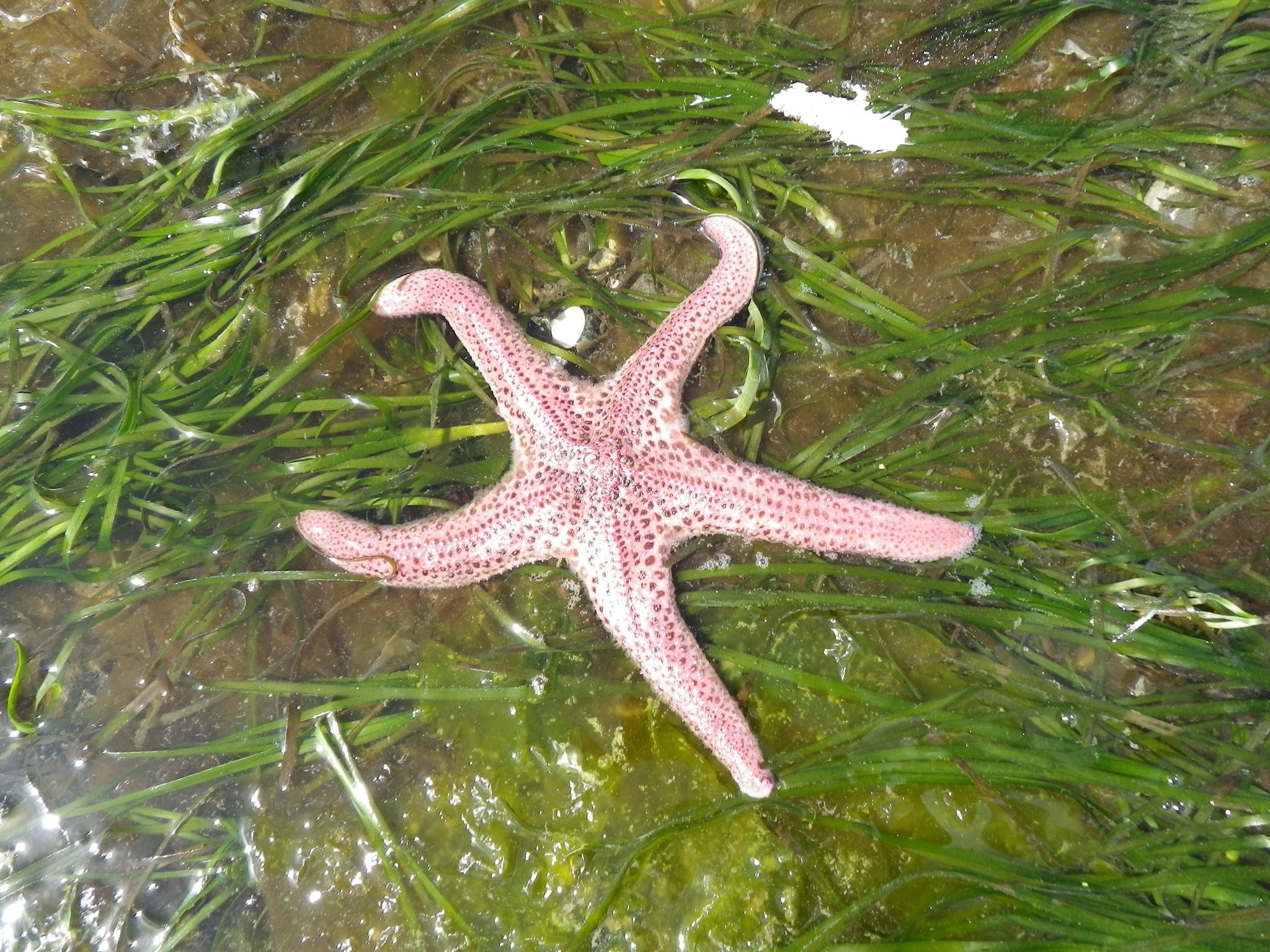If you have never seen a Six-Armed Star open an oyster or watched a Snake Prickleback wriggle through a forest of eelgrass, Indian Island is waiting for you. The island is just a short walk from Main Street in Eastsound, accessible during low tides from April to August. But with over 4,000 visitors each summer and a warmer, stormier ocean, what will Indian Island look like 10 years from now?
Scientists and volunteers from Kwiaht, a nonprofit conservation biology laboratory in and for the San Juan Islands, will gather at the Episcopal Parish Hall on Nov. 21 for their 10th annual report to the community on the health of the Indian Island and Fishing Bay marine ecosystem. In addition to the slideshow and displays, there will be finger foods, music, and a preview of special Kwiaht training sessions in early 2020 for Indian Island docents as well as an expanded shorebird monitoring program. The doors open at 5:30 p.m. and admission is free.
The focus of this year’s slideshow presentation is climate change. “Summer temperatures in the shallow eelgrass meadows and tide pools around Indian Island are several degrees higher than they were a decade ago,” says Kwiaht director Russel Barsh. “Warmer waters are a problem for some species and an attraction for others. The mix of species at Indian Island is changing.”
Barsh says that while the number of fish species feeding and rearing in Fishing Bay seems to have decreased, for example, some of the bay’s charismatic residents such as Midshipmen—a fish species with rocky underwater nests and mating calls—are thriving. “The rapid rise in water temperatures has created a temporary bottleneck,” Barsh says. “Most fish species are leaving for deeper, cooler waters, but those that can tolerate the heat are, for now, reproducing rapidly.”
Another example is sea stars. Ochre Stars, which are specially adapted to inter-tidal life and can tolerate periodic heating when the tide is out, have recovered rapidly from the Wasting Syndrome that swept through Fishing Bay in 2014. Indeed, they seem to be more abundant than ever: on any given early summer low tide, between 500 and 1,000 Ochre Stars can be seen at Indian Island along the water’s edge. But other sea star species have not returned. One of the lost species is the giant pink Short-Spined Star. One of these conspicuous sea stars visited Indian Island every summer for years and was nicknamed “Bertha” by volunteers. Bertha disappeared five years ago and no other members of her species have been seen in Fishing Bay. “Warmer seas promote marine contagious diseases,” Barsh says, “and can delay recovery.”
Learn more about the changing ecology of Indian Island and Fishing Bay and how you can get involved at the 10th annual “Celebrate Indian Island” event at the Episcopal Parish Hall on Nov. 21. You can email exploreindianisland@gmail.com for more information.



